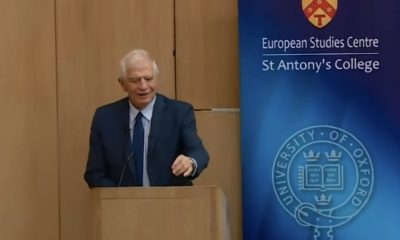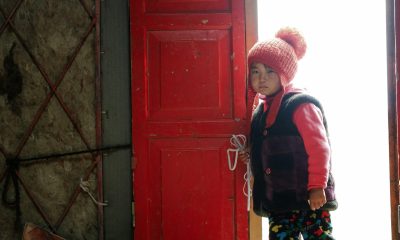iran
Déanann daoine mór le rá na hEorpa agus saineolaithe dlí idirnáisiúnta cur síos ar mhurt 1988 san Iaráin mar chinedhíothú agus mar choir in aghaidh na daonnachta

In an online conference coinciding with the anniversary of the 1988 massacre in Iran, more than 1,000 political prisoners and witnesses of torture in the Iranian prisons demanded an end to the impunity enjoyed by the regime leaders and to prosecute the supreme leader Ali Khamenei and the President Ebrahim Raisi, and other perpetrators of the massacre.
In 1988, based on a fatwa (religious order) by the founder of the Islamic Republic, Ruhollah Khomeini, the clerical regime executed at least 30,000 political prisoners, more than 90% of whom were activists of the Mujahedin-e Khalq (MEK/PMOI), the principal Iranian opposition movement. They were massacred for their steadfast commitment to MEK’s ideals and the Iranian people’s freedom. The victims were buried in secret mass graves and there has never been an independent UN inquiry.
Maryam Rajavi, the president-elect of the National Council of Resistance of Iran (NCRI), and hundreds of prominent political figures, as well as jurists and leading experts on human rights and international law from around the world, participated in the conference.
In her address, Rajavi said: The clerical regime wanted to break and defeat every member and supporter of the MEK by torturing, burning, and flogging. It tried all evil, malicious, and inhuman tactics. Finally, in the summer of 1988, MEK members were offered a choice between death or submission coupled with renouncing their loyalty to the MEK….They courageously adhered to their principles: the overthrow of the clerical regime and the establishment of freedom for the people.
Mrs. Rajavi underscored that the appointment of Raisi as president was an open declaration of war on the people of Iran and the PMOI/MEK. Emphasizing that the Call-for-Justice Movement is not a spontaneous phenomenon, she added: For us, the Call-for-Justice movement is synonymous with perseverance, steadfastness, and resistance to overthrow this regime and establish freedom with all our strength. For this reason, denying the massacre, minimizing the number of victims, and erasing their identities is what the regime is seeking because they serve its interests and ultimately help preserve its rule. Concealing the names and destroying the graves of the victims serve the same purpose. How can one seek to destroy the MEK, crush their positions, values, and red lines, eliminate the Resistance’s Leader, and call himself a sympathizer of the martyrs and seek justice for them? This is the ploy of the mullahs' intelligence services and the IRGC to distort and divert the Call-for-Justice Movement and undermine it.
She called on the US and Europe to recognize the 1988 massacre as genocide and crime against humanity. They must not accept Raisi in their countries. They must prosecute and hold him accountable, she added. Rajavi also reinstated her call to the UN Secretary-General, the UN High Commissioner for Human Rights, the UN Human Rights Council, the UN special rapporteurs, and international human rights organizations to visit the Iranian regime's prisons and meet with the prisoners there, especially the political prisoners. She added that the dossier of human rights violations in Iran, especially regarding the regime's conduct in prisons, should be submitted to the UN Security Council.
Participants in the conference that last more than five hours, took part from more than 2,000 locations the world over.
In his remarks, Geoffrey Robertson, First President of the UN Special Court for Sierra Leone, referring to Khomeini's fatwa calling for the annihilation of the MEK and calling them Mohareb (enemies of God) and used by the regime as the basis of the massacre, he reiterated: “It seems to me that there is very strong evidence that this was a genocide. It applies to killing or torturing a certain group for their religious beliefs. A religious group that did not accept the backward ideology of the Iranian regime… There is no doubt that there is a case for prosecuting [regime President Ebrahim] Raisi and others. There has been a crime committed that engages international responsibility. Something must be done about it as has been done against the perpetrators of the Srebrenica massacre.”
Raisi was a member of the “Death Commission” in Tehran and sent thousands of the MEK activists to the gallows.
According to Kumi Naidoo, secretary-general of Amnesty International (2018-2020): “The 1988 massacre was a brutal, bloodthirsty massacre, a genocide. It is moving for me to see the strength and courage of people who have been through so much and seen so much tragedy and endure these atrocities. I'd like to pay tribute to all the MEK prisoners and applaud you… The EU and broader international community must take the lead on this issue. This government, led by Raisi, has even greater culpability on the issue of the 1988 massacre. Governments that behave like this must recognize that behavior is not so much a show of force as an admission of weakness.”
Eric David, an expert on international humanitarian law from Belgium, also confirmed the characterization of genocide and crimes against humanity for the 1988 massacre.
Franco Frattini, foreign minister of Italy (2002–2004 and 2008–2011) and European commissioner for justice, freedom and security (2004–2008) said: "The actions of the new government of Iran are in line with the regime's history. The new foreign minister has served under previous governments. There is no difference between conservatives and reformists. It is the same regime. This is confirmed by the Foreign Minister's closeness to the commander of the Quds Force. He even confirmed that he would continue the path of Qassem Soleimani. Finally, I hope for an independent investigation with no limitation into the 1988 massacre. The credibility of the UN system is at stake. The UN Security Council has a moral duty. The UN owes this moral duty to innocent victims. Let us seek justice. Let us go forward with a serious international investigation."
Guy Verhofstadt, prime minister of Belgium (1999 to 2008) pointed out: “The 1988 massacre targeted an entire generation of young people. It is crucial to know that this was planned in advance. It was planned and rigorously executed with a clear target in mind. It qualifies as genocide. The massacre was never officially investigated by the UN, and the perpetrators were not indicted. They continue to enjoy impunity. Today, the regime is run by the killers of that time.”
Giulio Terzi, foreign minister of Italy (2011 to 2013) said: “Over 90% of those executed in the 1988 massacre were MEK members and supporters. The prisoners chose to stand tall by refusing to renounce their support for the MEK. Many have called for an international investigation into 1988 massacre. EU High Representative Josep Borrell should end his usual approach toward the Iranian regime. He should encourage all UN member states to demand accountability for Iran’s great crime against humanity. Thousands of people are out there who expect a more assertive approach by the international community, especially the EU.”
John Baird, Canada's foreign minister (2011-2015), also addressed the conference and condemned the 1988 massacre. He, too, called for an international investigation into this crime against humanity.
Audronius Ažubalis, minister of foreign affairs of Lithuania (2010 – 2012), underscored: "No one has yet faced justice for this crime against humanity. There is no political will to hold the perpetrators to account. A UN investigation into the 1988 massacre is a must. The European Union has ignored these calls, shown no reaction, and not been prepared to show a reaction. I want to call on the EU to sanction the regime for crimes against humanity. I think Lithuania can take the lead among EU members.”
Comhroinn an t-alt seo:
-

 Comhbheartas Eachtrach agus SlándálaLá ó shin 4
Comhbheartas Eachtrach agus SlándálaLá ó shin 4Déanann Ceannaire Bheartas Eachtrach an AE comhchúis leis an RA i measc achrann domhanda
-

 iranLá ó shin 2
iranLá ó shin 2Cén fáth nach dtugtar aghaidh go fóill ar ghlaoch pharlaimint an AE an IRGC a liostú mar eagraíocht sceimhlitheoireachta ?
-

 BrexitLá ó shin 2
BrexitLá ó shin 2Droichead nua d’Eorpaigh óga ar an dá thaobh den Mhuir nIocht
-

 An ChirgeastáinLá ó shin 3
An ChirgeastáinLá ó shin 3Tionchar Oll-Imirce na Rúise ar Teannas Eitneach sa Chirgeastáin



























